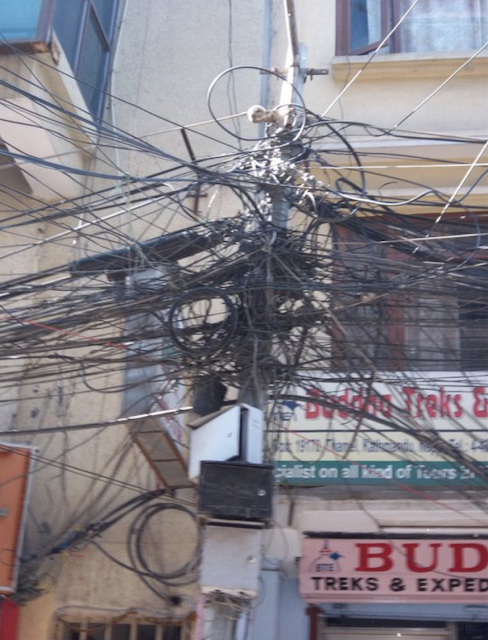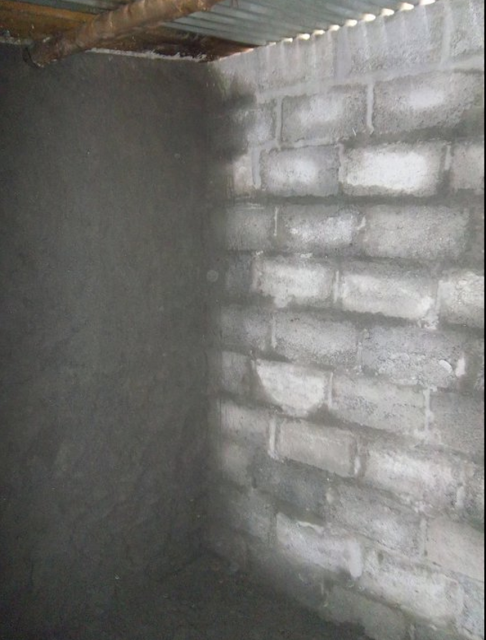Going to Nepal in 2011 was the first Global Village build that we did with Habitat for Humanity. It was an experience that hooked me on such trips and I have done many since then. I did not have this blog then, so now, ten years later, I have pulled up some photos and am putting this post together.
On Wednesday evening, March 30, 2011, we made the two flight to San Francisco, then 12+ hours to Seoul Korea and then 6+ hours to Singapore. As you can imagine, we were pretty exhausted by then - but we only had seven hours there, so we did not have enough time to get a hotel room. The Singapore airport is amazing - high end stores and amazing gardens.
After another 5+ hours of flying, we made it to Katmandu, Nepal. The two hour taxi ride to the hotel was an adventure, avoiding the sacred cows that roamed freely and the many wild monkeys as well. We checked into Hotel Norbu Linka. Our room was pleasant and basic.
After 45 hours of travel, we went back downstairs and had dinner at the hotel with what was to become my favorite Nepali beer, Everest.
Because of the monkeys, we were told we could open the windows but we had to make sure the screens were in place and were secure. Here is the view from our fourth floor window.
We arrived on Friday evening. Other volunteers arrived that night and the next day. The group went out to lunch Saturday. We had to climb three flights of stairs and then sat on cross legged on pillows. Saturday evening we went to dinner and a show.
I took a couple more photos of the hotel lobby.
Electricity, phone and cable wires were a jumble on every telephone pole. Some wires were so low, I had to duck under them.
Suunday we had a tour of Patan Durbar Square; Patan Durbar Square is situated at the centre of the city of Lalitpur in Nepal. It is one of the three Durbar Squares in the Kathmandu Valley, all of which are UNESCO World Heritage Sites. One of its attraction is the ancient royal palace where the Malla Kings of Lalitpur resided. The Durbar Square is a marvel of Newar architecture.
Monday, we flew to Pokhara on Yeti Airlines and went to Hotel Panorama, our home for the next two weeks. The hotel was very basic, but it more than met our needs. In Pokhara, there was electricity, but there were both scheduled rolling blackouts and an occasional unscheduled black out - all because there was not enough electricity for all of the city 24 hours a day.
From the hotel, we could see Machhaphuchhare or Mount Fish Tail. Machapuchare, Machhapuchchhre or Machhapuchhre (from Nepali माछापुच्छ्रे 'fishtail', Tamu: कतासुँ क्लिको), is a mountain situated in the Annapurna massif of Gandaki Pradesh, north-central Nepal.
Our task was to build three one room homes, each about 10 foot by 14 foot, with concrete floor and front stoop, cinder block walls and metal roofs.
Breakfast at the hotel was at 7:30. Being an early bird, I went out walking and found a coffee shop that opened at 6:00. After that, several people would go with me each morning for a coffee and a pastry, all very reasonably priced.
 |
| After coffee, people were much happier. |
 | |||
| Before coffee, we were a tired looking group |
In the cities, the laws mandated equality for men and women - we saw this in Kathmandu and in Pokhara, but the small village where we were building, the male dominated caste system meant the men and boys sat and played games in the shade in the town square while the women and girls worked.
As in the big cities, holy cows were free to wander - you had to watch where you stepped.
While our worksite was about 30 minutes outside of Pokhara, our lunch site was a five minute walk away. One day we had traditional music at lunch.
Family members are required to put in some sweat equity, just as in the USA. So we had both family members and the paid masons who worked with us. The paid masons taught us what to do, supervised us and worked along with us.
 |
| Family member working on the front porch |
I got the name for this blog from the Sherpa Store.
One day, we paid a visit to the Gurkha Museum.
The caste system was still in place, in spite of laws banning it. The girl on the left was a deaf mute. She was 4th caste, the lowest level. All of the speech therapists were 1st or 2nd caste, so none of them would work with this poor girl.
Even in the cities, many of the homes followed the system we were building out in the village. In the middle of newer high rise buildings, you could find one story buildings where the metal roofs were simply held in place with rocks - had you drilled holes to screw or nail them down, you would then have leaks. Because the Indian sub-continent is moving north into Asia, the Himalayan mountains continue to grow taller and bring rocks to the surface. Thus, there is a simple and inexpensive way to hold roofs in place.
We visited the Tibetan Refugee Center run by the Swiss. They had a store, temple, residences and a rug production facility - we bought three hand woven Tibetan rugs.
This house shows the shack they were living in and the new house we were building. Once the new house is done, they will move from the shack and the shack will become a storage and work space.
The village is about a half mile from the river. where they got water to mix the concrete - carried in jugs in packs on the women's back with the strap that went around their forehead.
A half mile up hill from the village is where another village had a community well - this is where they got drinking water and lugged it back down hill to the village. We volunteers had bottled water for our entire time in Nepal.
We were leveling out the yard that would become a garden and moved this huge stone that once out of the ground we rolled over to house to be the step up to the front porch.
We visited the Himalayan Mountain Climbing Museum.
On the Nepalese New Years Day, it is good luck if you visit Mount Sarangkot at sunrise, so we did.
Here is a better photo of Mount Fish Tail from our hotel.
On our last Friday afternoon, we had a dedication ceremony where the houses were given to the families.
We had a last team dinner before leaving Nepal.
One group of seven women went to Bhutan for a week long tour. The rest of us headed home, some to Australia, one to Dubai, the rest to America. This time, our schedule included a 14 hour layover in Singapore, long enough for a nice night in a marvelous hotel with large beds, plenty of hot water, good food and air conditioning. Then it was on to Tokyo, Los Angeles and home to Phoenix. This was the start of my decade of involvement with Habitat for Humanity and the Fuller Center for Housing, the two non-profits started by Millard and Linda Fuller. What a decade it has been. Now I wait for the pandemic to slow down enough to allow travel so that I can continue to volunteer like this.

























































































No comments:
Post a Comment